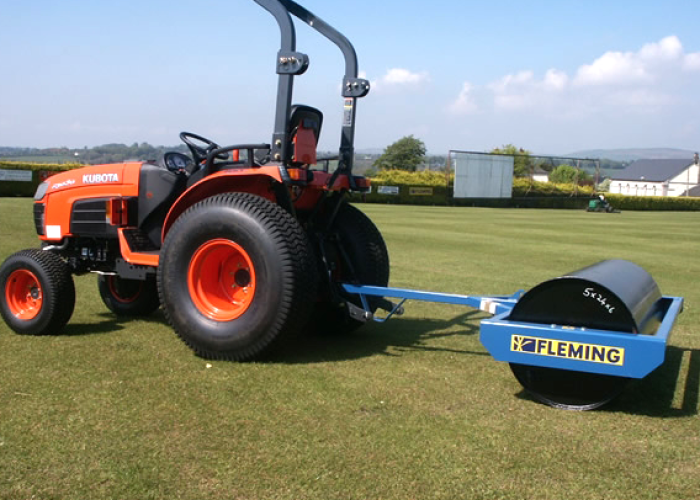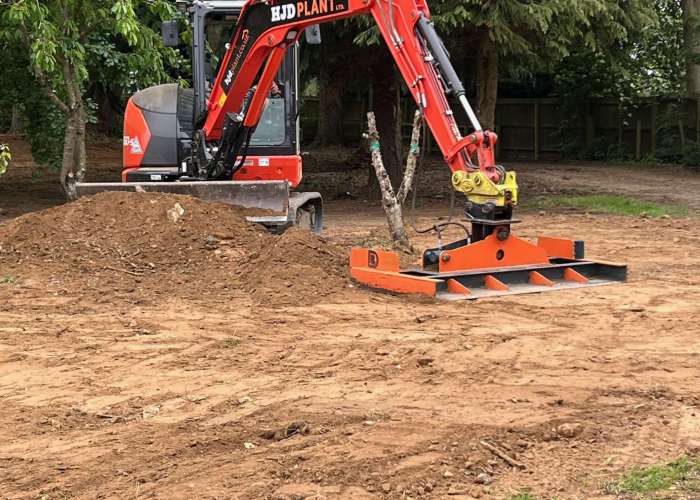

Paddock topping removes tall, tough grass that is not palatable to livestock, in particular to horses and ponies. The ideal length for grazing animals is around 100mm or 4 inches.
Cutting weeds before they have time to go to seed prevents them from germinating and spreading.
Paddock Topping is a good way of keeping ragwort, docks, buttercups and thistles in check. Regular paddock topping in the growing season will stimulate new growth in the ley and create a much thicker sward helping to prevent weed growth.

Grass Harrowing is used to drag out thatch, dead grass, making way for new growth. It will help to remove moss and weeds as well as help to level ground and mole hills.
As the thatch and dead grass is removed, air and light will be let in, allowing new grass to shoot and grow. This will increase sward density which will help to stop weeds taking hold and smothering grass. It will also help distribute any manure that is around, helping it to rot and release nutrients, allowing sunlight and air to kill dormant worm eggs.

Paddock Rolling is usually carried out in the spring once the weather becomes drier. There are two types of roller flat and ridged. Ridged or Cambridge rolls are for rolling newly seeded virgin ground. Flat ballasted rollers are for established grassland. Ridged Cambridge rolls are excellent for rolling new leys and making sure that the seed is in contact with the ground. Germination is a lot quicker and flourishing after using this machine.
During flat rolling, the grass is compressed, which makes it spread out, creating a thicker sward and helping to prevent weeds from appearing. Uneven ground, created by livestock, tractors and vehicles can be flattened. We usually carry out paddock rolling after harrowing which helps push any stones back into the field that has been pulled up by the harrows.

Soil aeration if often overlooked but has an essential part to play in paddock and pasture maintenance.
Livestock, machinery and heavy rain during the winter months tend to compact the ground. Inadequate drainage, reduced runoff creates an environment that is more favourable to weeds, moss and disease, which produces less grass and unhealthy soil.
Soil aeration reduces soil compaction and ensures better drainage on your land. Aerated soil allows oxygen in and grassroots to grow deeper into the earth, which helps the plant to survive better during dry spells and become more productive. Soil aeration helps to reduce thatch which is made up of old grass roots and stems that accumulate faster than they break down. A build-up of thatch can create an environment that encourages weeds and disease.

Paddocks that are worn, damaged and poached after a long, wet winter can be brought back full life with our overseeding and rejuvenation service.
Muddy and worn pastures are a common occurrence after the colder months, and as a landowner, it is essential to get them back into good condition for a productive year.
Overseeding should be a part of ongoing maintenance for long term leys. Over time, pastures and paddocks may become poached and thin due to factors including overgrazing, poor drainage and neglect. Long term leys should last for a period of five years before they are ploughed up and resown. If this happens, it may be some time before the field can be in full production again.
Overseeding will prolong the life of pasture and paddocks and make them far more productive. There is no need for ploughing or cultivation, and the land is back in productive use in a matter of weeks. Overseeding farm stewardship schemes and field boundaries with our equipment is very efficient and economical.
Ready to talk about your Paddock Maintenance? Give Mike a call to discuss.
